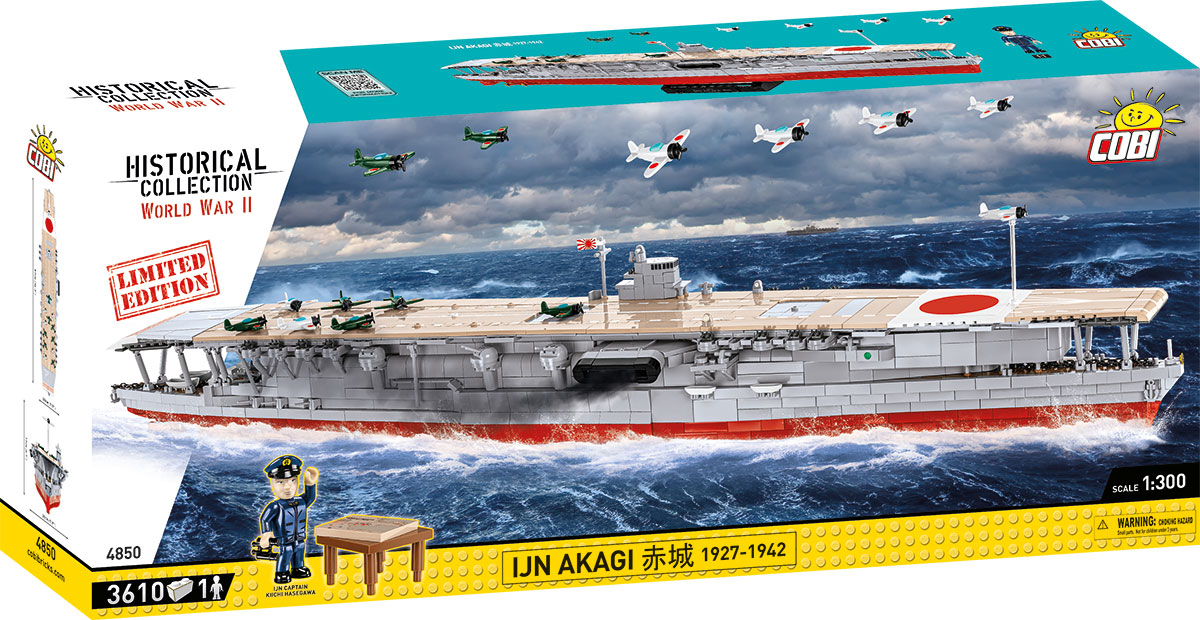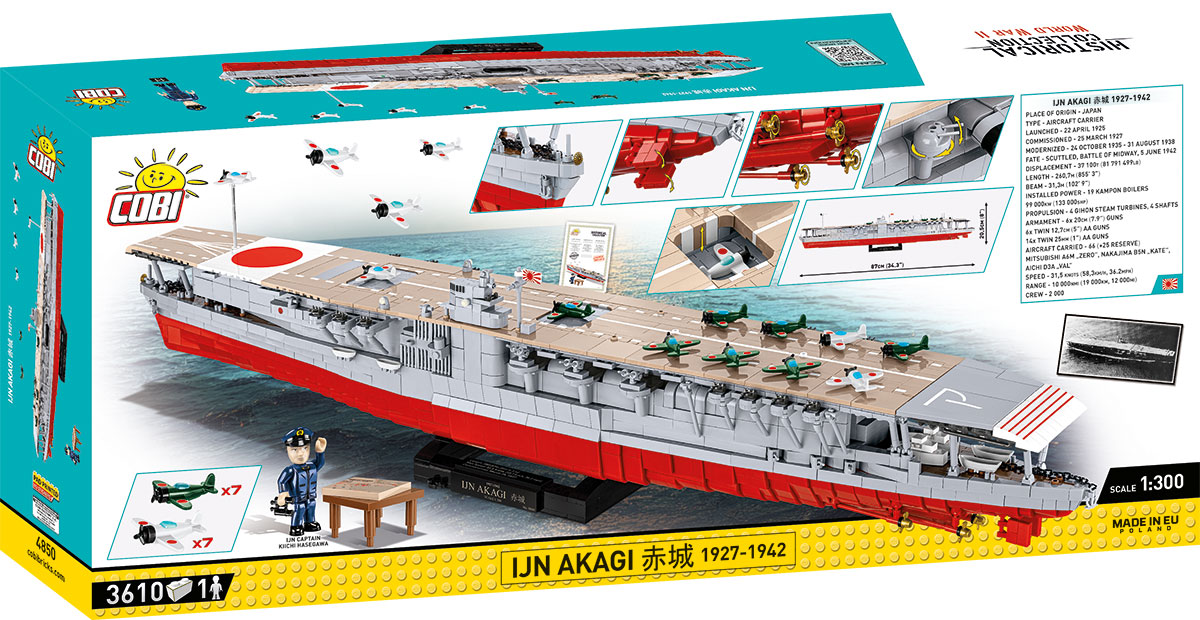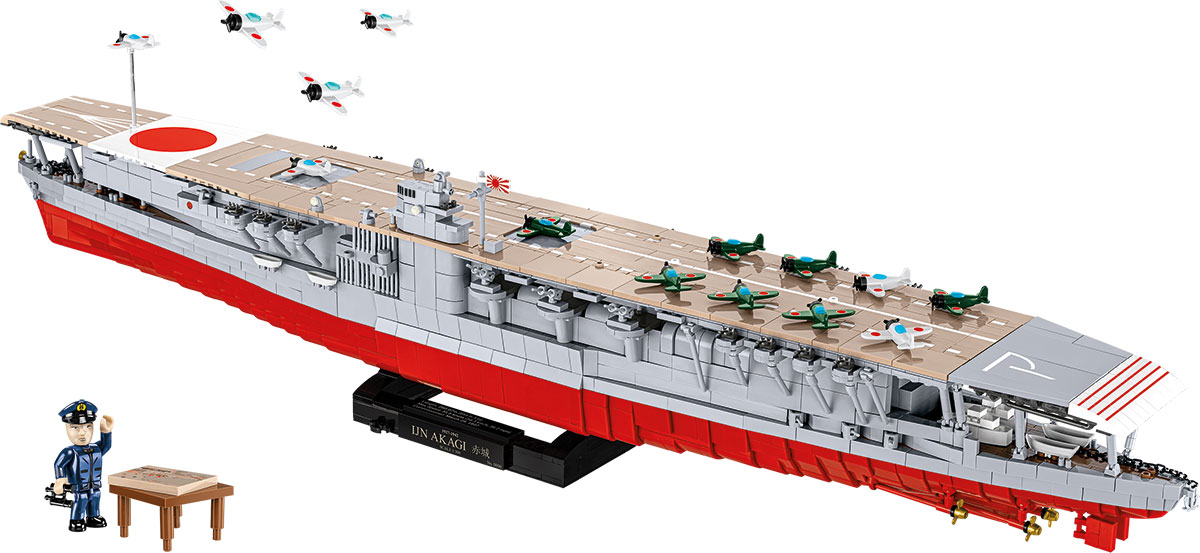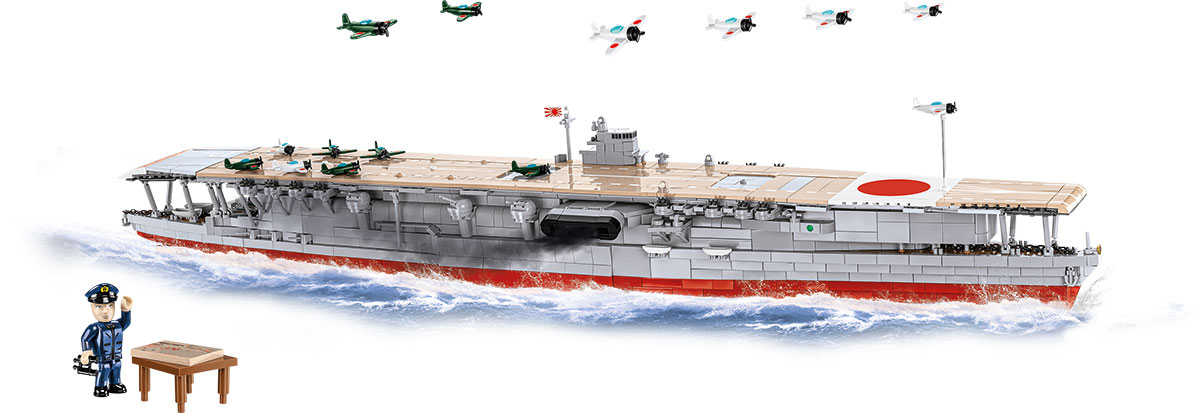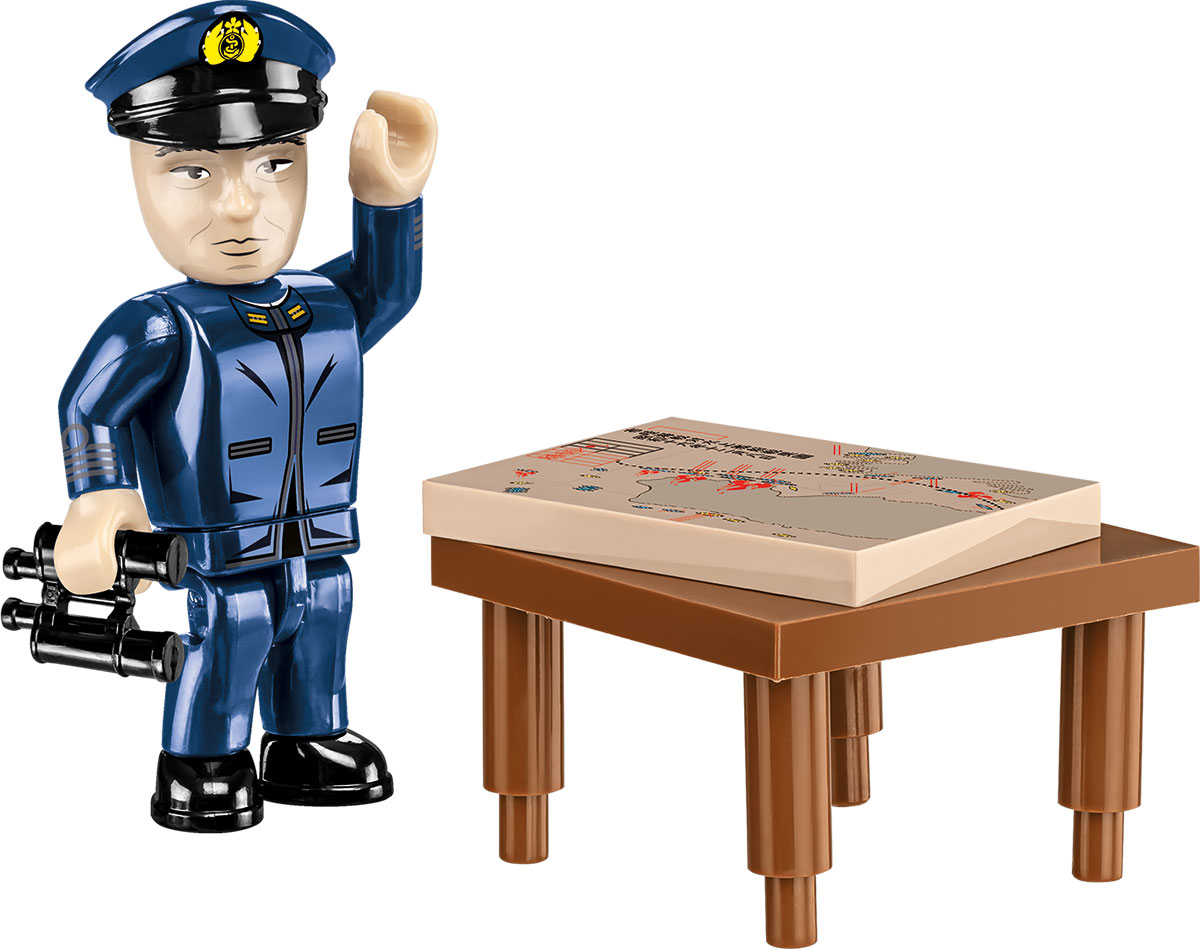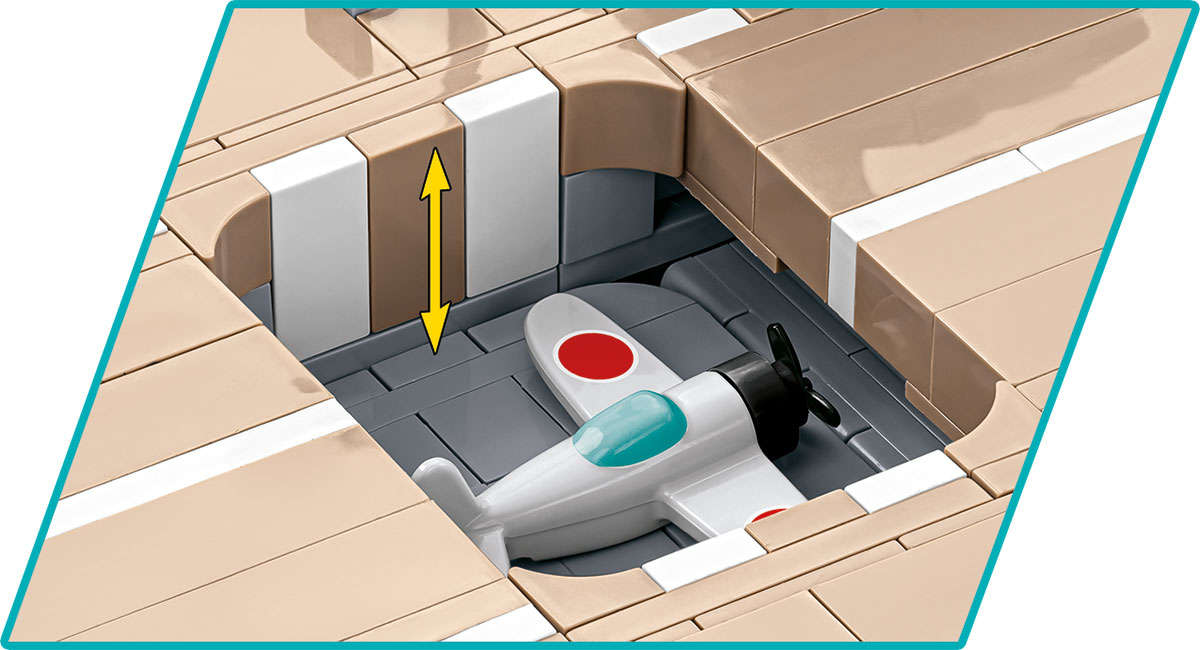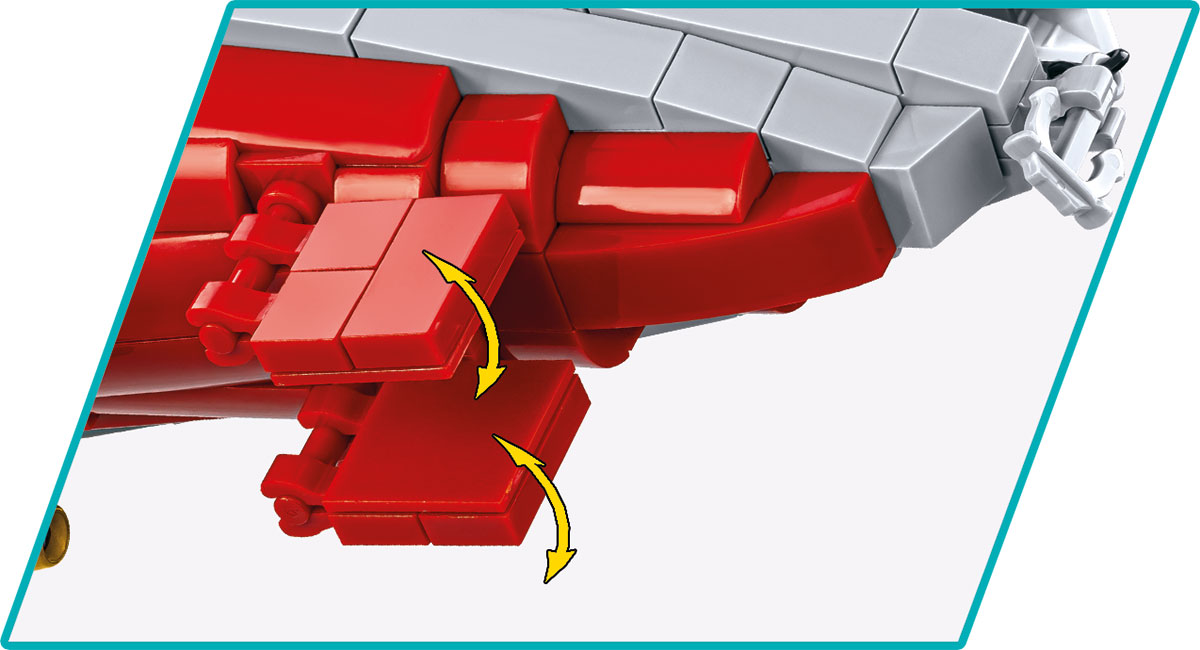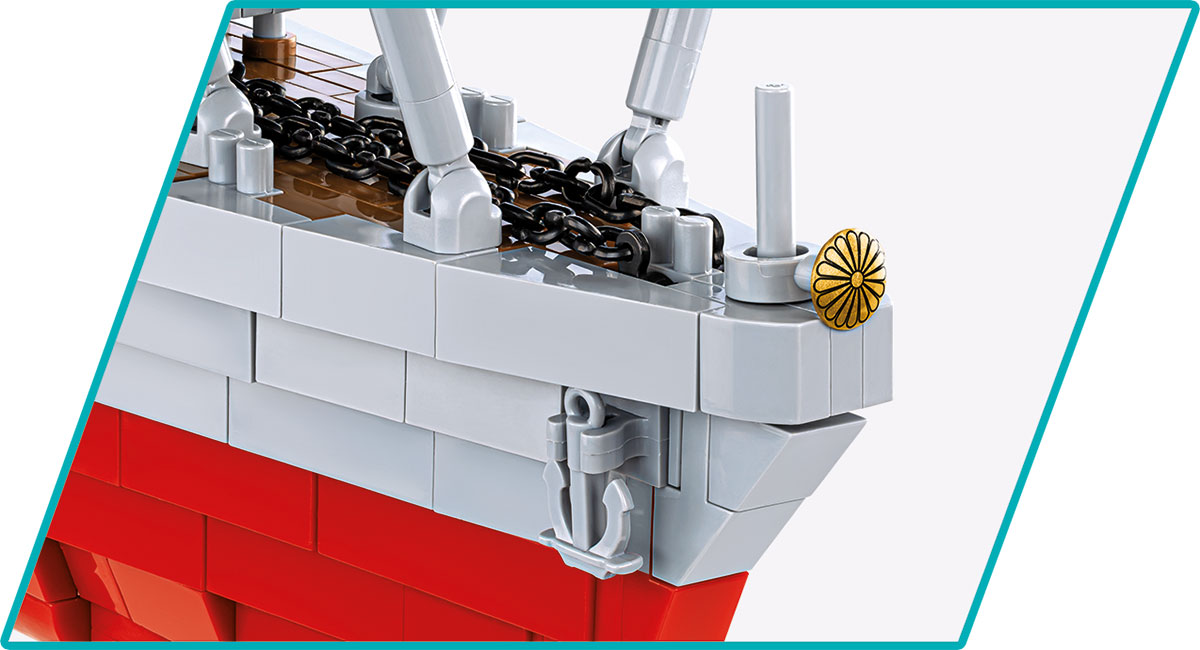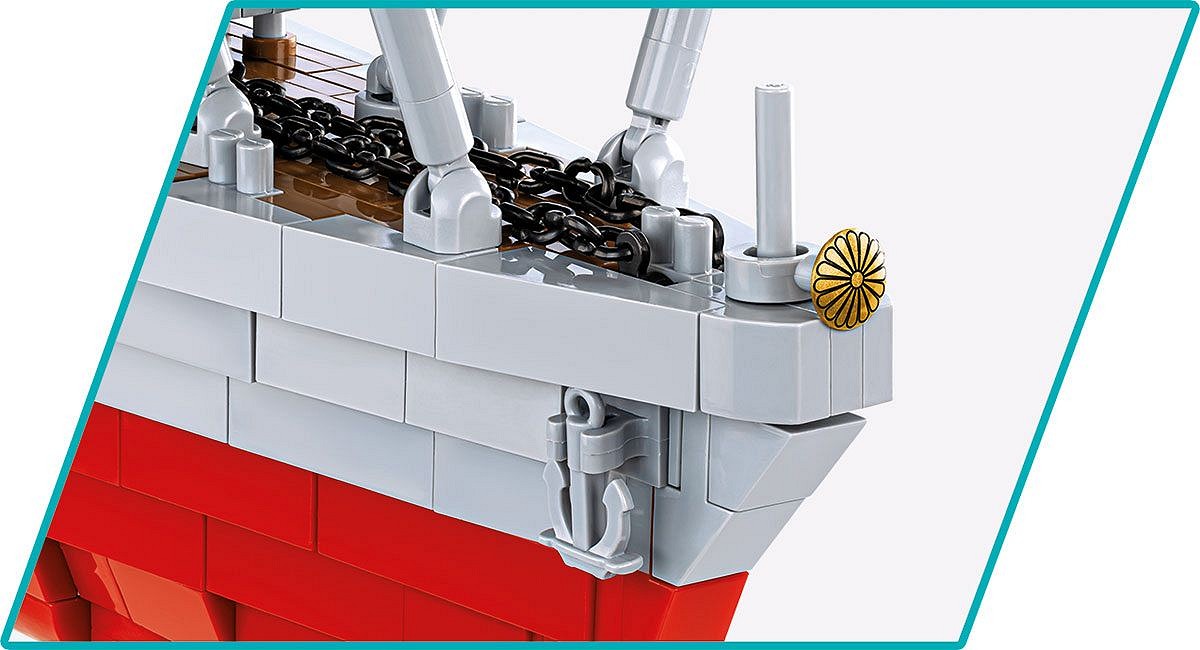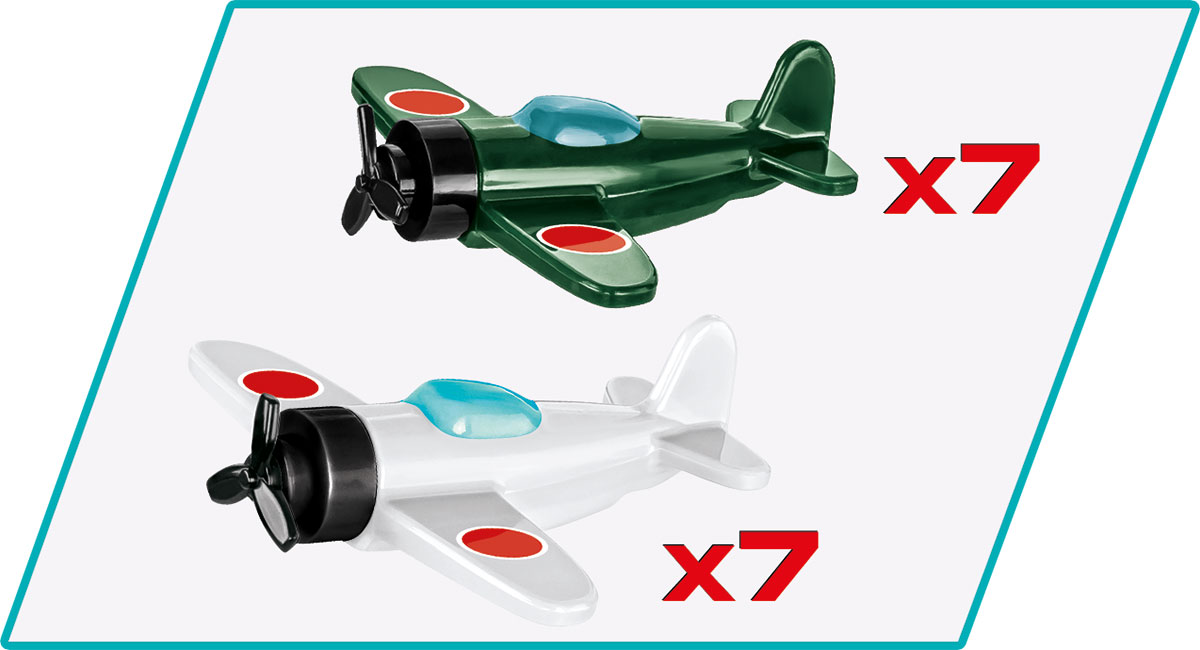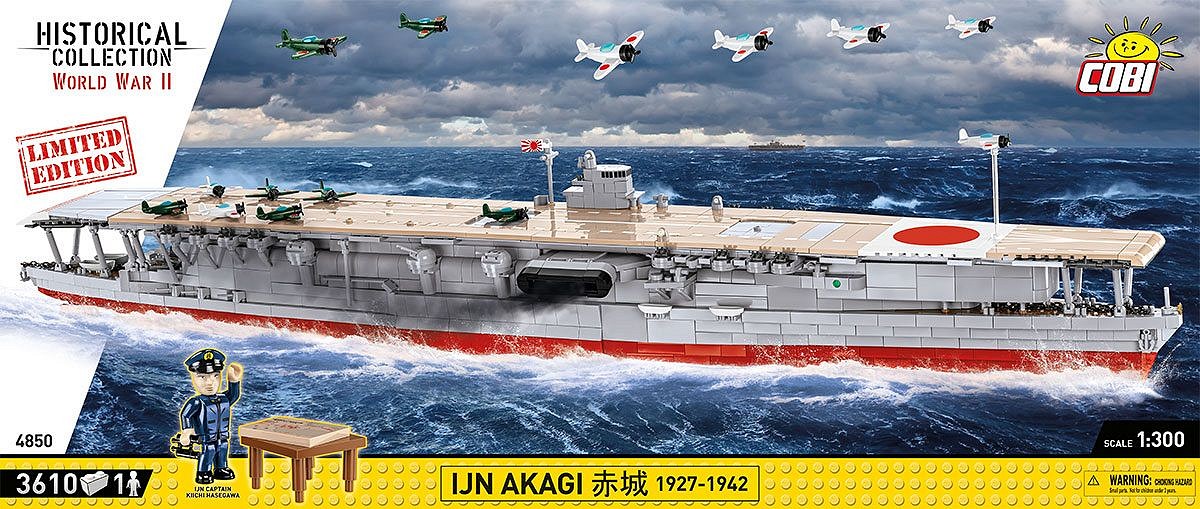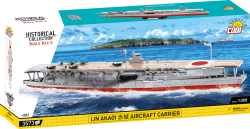Kit model of the famous Japanese aircraft carrier IJN AKAGI made in many details. Anti-aircraft gun towers are located on the sides of the ship, lifeboats are suspended above the waterline. The upper flight deck has two elevators that can be lowered using a built-in mechanism. The limited edition kit also includes 7 Mitsubishi miniplanes, 7 Nakajima miniplanes, a figure of Captain Kiichi Hasegawi with a map of the attack on Pearl Harbor and a certificate with a unique serial number attesting to the originality of the product. You can safely store the assembled model in the stand with the description included in the package.
Show more
0 %
(0 Ranking)
| List Number: | COBI-4850 |
| EAN: | 5902251048501 |
| Warranty: | 24 months |
| Manufacturer: | COBI |
| Price excluding VAT: | 5 195,82 Kč |
Description
Parametres
Files and Links
Discussion
Reviews

You know that:
- Construction of the ship began on 7 December 1920.
- At the time of construction, it was not yet an aircraft carrier with an upper flight deck, but a battle cruiser to counterbalance the American Lexington-class ships.
- In 1922, Japan pledged to reduce armaments and the ship was to be scrapped. Eventually, the Imperial Navy command decided to convert her to an aircraft carrier. At that time aircraft carriers were just being built and no importance was attached to them until the start of World War II, which is why no one minded the conversion and the ship could be completed in the shadow of US disinterest.
- The construction of the hull was almost not completed because the shipyard in Kure was hit by a strong earthquake on 1 September 1923 and the hull was severely damaged.
- The completed vessel was launched on 22 April 1925. During the ceremony, the ship was named after the inactive volcano AKAGI. This name can be loosely translated as Red Castle. The naming of the ship caused a stir among the Japanese public, as tradition had it that the ship was to be named after a flying animal.
- In its original layout, the ship had three flight decks, a main upper deck for landing aircraft and a lower long and short flight deck that allowed aircraft to take off directly from the hangars. However, this arrangement was not successful and in 1935 the lower decks were abolished. This arrangement allowed the number of aircraft to be increased from 61 to 91.
- AKAGI's combat capabilities were used first during the Sino-Japanese War, but as early as 10 April 1941 she became the flagship of the new Dai-ichi fleet intended to lead the attack on the American Pearl Harbor.
- On the morning of 7 December 1941, an icebreaker took off from AKAGI's deck with pilot Mituso Fuchida, who famously shouted TORA! TORA! TORA! gave the order to attack.
- The aircraft carrier AKAGI carried out many combat missions in the Western, Southwest Pacific, Indian Ocean. She was finally severely damaged during the Battle of Midway on June 4, 1942, and sunk by her own destroyers the following day.
Technical parameters:
- dimensions: length 260.7 m, width 31.3 m, draught 8.71 m
- displacement 42 000 tonnes
- 152 mm side armour, 78 mm deck armour
- 19 Kanpon steam boilers to drive 4 Gihon&Kanpon turbines with power transmission to 4 propellers
- fuel light oil
- fuel tank capacity 5 775 tonnes
- maximum speed 57 km/h
- range 14 800 km
- crew 1630 persons
- armament 6x guns of 200 mm calibre, + 12x guns of 120 mm calibre + 28 anti-aircraft guns of 25 mm calibre
- number of aircraft on board 91
Crewman Mitsuo Fuchida on the destruction of AKAGI:
"When I looked around, I was horrified at the devastation that occurred in a matter of seconds. There was a large hole in the flight deck, just behind the middle elevator. The elevator itself, twisted like molten glass, was plunging into the hangar. The flight deck plates twisted upwards in grotesque configurations. The tails of the planes stuck up, consumed by purple flames and black smoke,,
Assembly instructions
| Number of figurines | 1 pcs |
|---|---|
| Recommended age | 10+ |
| Scale | 1:300 |
| Number of pieces | 3610 pcs |
| Box dimensions | 75 x 31,5 x 10 cm |
| Dimensions after assembly | 87 x 20 x 17 cm |
| Contains luminous blocks | No |
| Material | Plastic |
| Collection | World War II |
| Compatible with other brand of kits | Yes |
Discussion is empty.
There is no review for product yet









